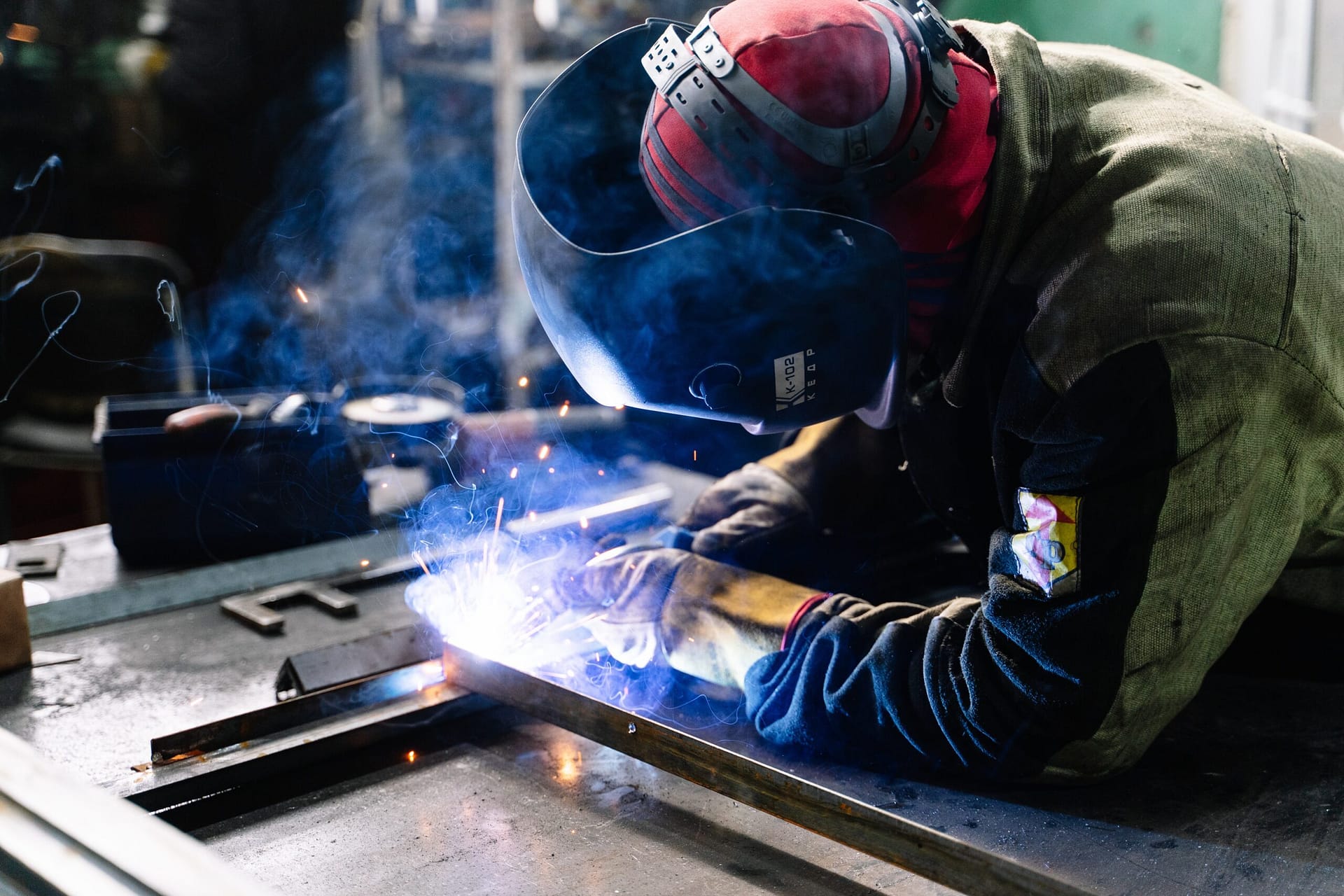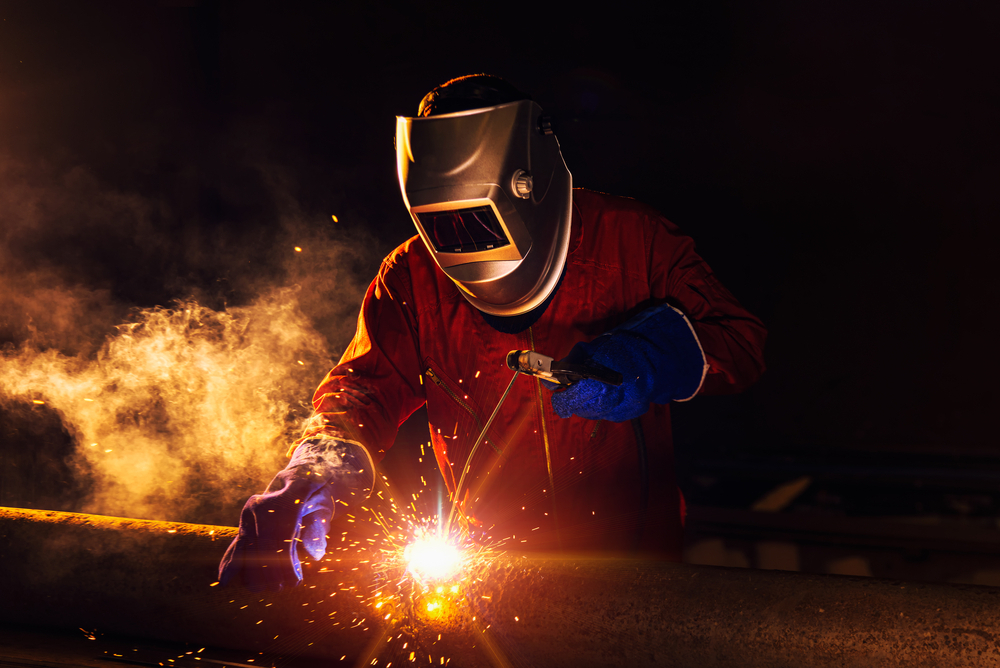Common Welding Repair Service Issues and Exactly How to Address Them Properly
Welding fixings usually encounter a range of concerns that can threaten the integrity of the last product. Usual issues include poor penetration, porosity, and imbalance, to name a few. Each flaw presents special challenges that require certain strategies for resolution. Understanding these issues is necessary for welders aiming to improve their skills and end results. This discussion will check out these usual welding repair work problems and effective techniques to resolve them.
Insufficient Infiltration
Poor infiltration occurs when the weld metal fails to fully fuse with the base product, causing weak joints and possible structural failures. This concern typically comes from inadequate warm input, wrong electrode angle, or inappropriate welding rate. Welders may encounter insufficient infiltration due to a miscalculation of the necessary parameters for a certain material density or type. Additionally, contamination on the base material's surface can impede efficient bonding, exacerbating the trouble. To address inadequate penetration, welders need to ensure ideal setups on their devices and maintain a tidy job surface. Routine assessment of welds is advised to identify any kind of shortages early, permitting for timely improvements and the avoidance of compromised architectural stability in welded settings up.
Porosity
Porosity is a common issue in welded joints that materializes as little gas bubbles caught within the weld metal. This problem can jeopardize the integrity of the weld, causing minimized stamina and possible failure under stress and anxiety. Montana Mobile Welding and Repair Belgrade. Porosity commonly develops from contamination, wetness, or incorrect welding methods, which allow gases to escape into the liquified weld swimming pool. To deal with porosity, welders must guarantee proper surface area prep work, maintain a tidy functioning environment, and make use of ideal welding parameters. Furthermore, choosing the best filler material and securing gas can alleviate gas entrapment. Normal inspection and testing of welds can aid determine porosity early, guaranteeing timely corrective activities are taken, thereby protecting the quality and reliability of the welded structure
Imbalance
Imbalance in welding can develop from numerous factors, consisting of incorrect setup and thermal expansion. Recognizing the origin is essential for effective resolution. Several improvement techniques are available to straighten components and ensure structural stability.
Causes of Imbalance
Welding misalignment often originates from a range of underlying issues that can compromise architectural honesty. One key reason is improper fit-up of components prior to welding, which can bring about spaces and uneven surface areas. Variations in thermal growth throughout the welding procedure can additionally result in distortion, specifically if the products being joined have various coefficients of development. In addition, inadequate fixturing and securing may fall short to hold parts firmly in place, resulting in activity during welding. Inadequately conserved devices, consisting of welding makers and devices, may present variances in the weld bead, additional adding to imbalance. Driver error, stemming from insufficient training or experience, can likewise play a significant duty in producing misaligned welds.

Adjustment Strategies Available
Dealing with imbalance effectively needs a combination of rehabilitative techniques customized to the specific concerns handy. One common method is using fixtures or jigs to hold elements in the correct setting throughout welding, guaranteeing constant alignment. Furthermore, pre-heating the materials can help in reducing distortion and improve fit-up. For considerable imbalance, mechanical realignment methods, such as utilizing hydraulic jacks or clamps, can be used to fix the setting before welding. Post-weld warmth treatment might additionally be essential to relieve stresses brought on by imbalance. Finally, careful examination and modification during the configuration phase can protect against misalignment concerns from coming to be considerable troubles, promoting a smoother welding process and improving general architectural honesty.
Distortion
Distortion is a typical difficulty in welding that can develop from numerous factors, consisting of uneven home heating and air conditioning. Understanding the causes of distortion is necessary for executing reliable prevention strategies. Resolving this concern not only enhances structural honesty but also improves the overall top quality of the weld.
Reasons of Distortion
When subjected to the intense warmth of welding, materials usually undergo adjustments that can lead to distortion. This phenomenon primarily develops from thermal development and tightening throughout the welding process. As the weld location warms up, the product expands; upon cooling, it gets, which can produce internal stresses. On top of that, uneven home heating across a work surface can exacerbate these tensions, resulting in warping or flexing. The sort of material also plays a significant duty; metals with differing thermal conductivity and coefficients of development may respond in a different way, resulting in unpredictable distortions. In addition, inadequate joint style and inadequate fixturing can add to misalignment throughout welding, enhancing the possibility of distortion. Understanding these causes is important for reliable welding repair work and avoidance techniques.
Prevention Techniques
Effective prevention techniques for distortion throughout welding concentrate on managing heat input and guaranteeing proper joint layout. Preserving a consistent heat input helps to reduce thermal development and contraction, which can cause distortion. Using techniques such as pre-heating the work surface can also minimize the temperature level gradient, advertising uniform heating. Additionally, choosing ideal joint styles, such as T-joints or lap joints, can improve security and lower stress and anxiety concentrations. Implementing appropriate fixturing to secure the work surfaces in position additionally help in maintaining alignment during the welding process. Finally, staggered welding sequences can distribute warm more evenly, protecting against local distortion. By applying these approaches, welders can greatly reduce the chance of distortion and boost the general quality of their welds.
Splitting
Breaking is this website a common issue experienced in welding repair services, often resulting from numerous factors such as inappropriate air conditioning prices, product option, or insufficient joint prep work. The event of fractures can significantly endanger the honesty of the weld, causing prospective failures throughout operation. To address this concern, welders should first examine the origin, making certain that materials are suitable and properly selected for the particular application. In addition, regulating the cooling price throughout the welding procedure is necessary; quick cooling can generate tension and bring about breaking. Correct joint style and preparation additionally add to reducing the threat. Carrying out these strategies can boost weld quality and sturdiness, inevitably decreasing the probability of breaking in ended up weldments.

Incomplete Blend
A substantial concern in welding repair services is insufficient blend, which happens when the weld metal does not appropriately bond with the base material or previous weld passes - Montana Mobile Welding and Repair Belgrade. This flaw can result in weak points in the joint, possibly jeopardizing the stability of the welded framework. Aspects adding to insufficient blend include not enough warm input, inappropriate welding amada weld tech strategy, and contamination of the surfaces being joined. To resolve this problem effectively, welders must guarantee correct pre-weld cleaning and surface area prep work, along with change their welding specifications to achieve adequate infiltration and blend. Regular inspection during the welding procedure can additionally aid determine insufficient fusion early, enabling prompt restorative measures to enhance the total high quality of the weld
Overheating
While welding repair services can enhance structural integrity, overheating offers a substantial challenge that can cause material deterioration. Excessive warm during welding can change the mechanical properties of steels, resulting in minimized stamina, raised brittleness, and warping. This sensation is particularly essential in high-stress applications where structural reliability is paramount. Recognizing overheating can entail visual inspections for discoloration or distortion, in addition to keeping track of temperature level during the welding process. To reduce the threats connected with getting too hot, welders need to utilize appropriate strategies, such as regulating warmth input, adjusting travel speed, and utilizing appropriate filler products. In addition, implementing pre- and post-weld heat therapies can help restore product residential or commercial properties and improve the general quality of the repair work, making certain long-term efficiency and safety and security.
Often Asked Concerns
What Are the Typical Indications of a Welding Flaw?

How Can I Check My Welds for Quality?
To evaluate welds for quality, one can use aesthetic evaluations, ultrasonic screening, and radiographic methods. Each strategy ensures architectural integrity, identifies flaws, and confirms adherence to specified standards, ultimately enhancing the dependability of the welded joints.
What Security Preventative Measures Should I Take While Welding?
When welding, one ought to prioritize safety by putting on appropriate personal protective tools, ensuring proper ventilation, securing flammable materials away, keeping a tidy workspace, and understanding environments to stop crashes and injuries.
Can I Fix a Weld Without Renovating the Entire Joint?
Fixing a weld without remodeling the entire joint is possible, relying on the damages (Montana Mobile Welding and Repair Welding). Strategies such as grinding, adding filler material, or utilizing a welding procedure can properly deal with particular problems while protecting the surrounding framework
What Tools Are Important for Reliable Welding Services?
Necessary tools for reliable welding fixings consist of a welding device, cord brush, grinder, protective gear, clamps, and filler products. Each device plays an important duty in guaranteeing quality and security during the repair service procedure. Porosity typically emerges from contamination, dampness, or incorrect welding methods, which permit gases to get away right into the liquified weld swimming pool. Inadequately conserved equipment, including welding devices and devices, might present disparities in the weld bead, further contributing to misalignment. When subjected to the intense warm of welding, products often go through changes that can lead to distortion. Cracking is a common concern run into in welding repair work, frequently resulting from numerous aspects such as inappropriate air conditioning prices, product choice, or inadequate joint prep work. A considerable problem in welding repair services is incomplete blend, which takes place when the weld steel does not effectively bond with the base material or previous weld passes.